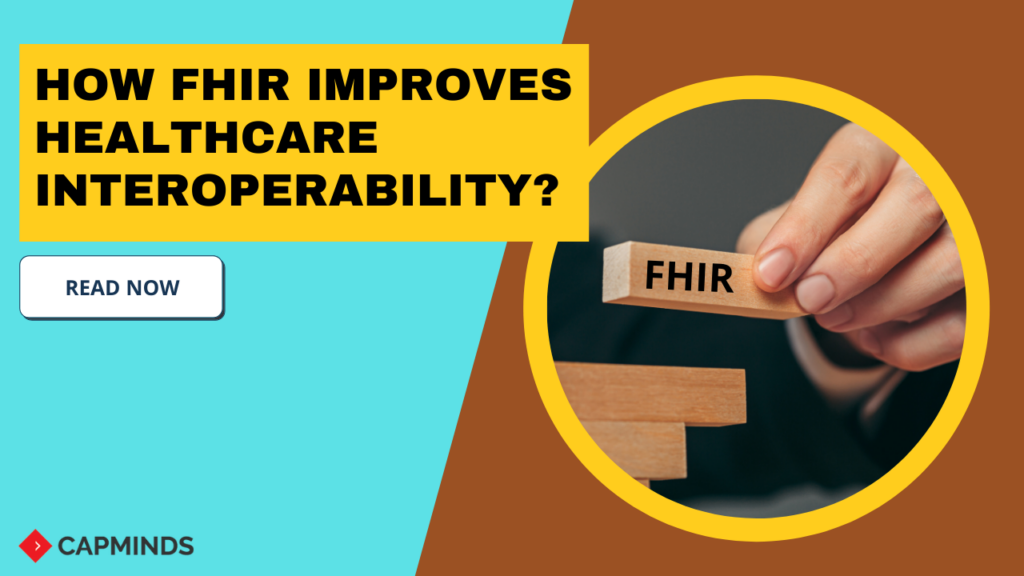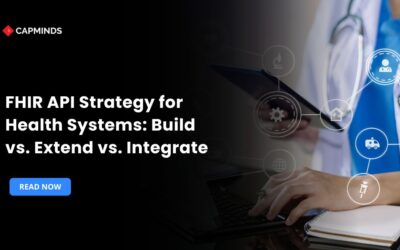How FHIR Improves Healthcare Interoperability?
Interoperability in healthcare has been a significant focus in the past decade both in legislation such as the 21st Century Cures Act and in the health tech industry. APIs are serving as a crucial developmental space towards improved interoperability, and many electronic health records (EHR) vendors are deploying them to improve integrated software offerings.
Because these platforms deal with sensitive information, their APIs must be on the cutting edge of development and security. In 2021, this means utilizing the increasingly popular Fast Healthcare Interoperability Resources (FHIR) format. If you are a developer looking to break into the healthcare space, or a medical practice trying to discern the necessary qualifications for a developer, an understanding of FHIR and other healthcare API formats is practically mandatory.
Formatting Standards: FHIR and JSON
FHIR
Fast Healthcare Interoperability Resources, more commonly known as FHIR, is a standard that describes data formats and elements as well as an API for exchanging EHR used by Apple Health Records and other companies developing solutions to improve patient health record access.
The FHIR format is highly regarded as the future of healthcare formatting as it continues to overtake older standards such as Health Level Seven International (HL7). For coding purposes, it looks fairly similar to another popular format, JSON, as both use objects like JavaScript. Because FHIR looks so similar to JSON, it can be easily converted if needed, unlike HL7 which creates some headaches in conversion.
FHIR is even beginning to transition from a health tech industry darling into the codified format of choice in the space. Recent policies are starting to encourage or outright require the transition to FHIR formats.
The Center for Medicare and Medicaid Services (CMS), has issued a rule requiring some government-funded plans, such as Medicaid and Qualified Health Plan payers, to build their APIs using FHIR to improve access and cut prior authorization turnaround times.
If you are a developer in the healthcare industry, it is highly recommended to adopt FHIR into your repertoire. This format is proving to be a powerful building block for improvements in healthcare interoperability and API development.
RELATED: FHIR FOR PAYERS: CHALLENGES & BENEFITS
JSON
JSON has been adopted across many industries as a preferred format for sending and receiving information via APIs, but it is by no means the only way to display information. HL7 is an early set of healthcare-specific standards for transporting clinical information, and while it’s still in use, it’s not particularly encouraged for new app development in the healthcare industry anymore.
For programmers that do need HL7-formatted data, app integrations are oftentimes available to convert the information, but it’s recommended to build an API on a modern language and provide the option for HL7 conversion in those edge cases as the format crawls towards obsolescence.
Benefits of FHIR
FHIR benefits different areas and has a significant impact on healthcare practices. The standard has a high potential for innovation and streamlining processes. This adoption ensures:
Quality Patient Care
FHIR focuses on delivering high-quality care through real-time, easy access to health data. Updated data on patient health enables healthcare providers to make informed and timely decisions, resulting in quality care.
Easy to access and share
The database approach of FHIR combined with its utilization of RESTful APIs promotes healthcare data more accessible and easier to share among different systems. This improves data accessibility and interoperability promotes care coordination and decreases the number of duplicate tests and treatments.
Organized Workflows and Efficiency
Simplified healthcare data exchange, FHIR can streamline workflows and increase the overall efficiency within healthcare facilities. It helps to focus more on patient care instead of spending a lot of time on administrative work.
Connect with Mobile and Web-Based Applications
FHIR’s support of modern web technologies makes it an ideal choice for developing mobile and web-based applications. This compatibility offers patient engagement by allowing individuals to access their health data and facilitates seamless interaction with healthcare providers.
Way for Innovation and Development
FHIR’s flexible and user-friendly structure for healthcare data exchange promotes innovation and development around the healthcare environment. This framework empowers the creation of new and innovative applications and services that aim to deliver quality care and optimize healthcare operations, looking for continuous advancement and improvement in the industry.
Regulatory Compliance
When there is a high focus on regulatory data interoperability, implementing FHIR can help healthcare organizations comply with such regulations as the CMS interoperability and patient access rule.
With this FHIR, healthcare practices can ensure their systems are compatible with regulatory standards, reduce the penalty amount, and reputation of the organization has been maintained.
Architecture: Restful API
REST APIs are important for platforms that handle continuous data calls, and it tends to be favored over the more rigid SOAP protocols. REST APIs are more compatible for large amounts of data to be sent and received, especially for mobile applications. For example, if you are sending information in HTTP [hypertext transfer protocol], you will have a lot of endpoints which are essentially a series of URLs that people can go to.
Security
Because healthcare technology is often dealing with very sensitive, private information, enhanced security measures are necessary. Many parties could be connecting to a healthcare API, so no compromises can be made about security.
OAuth 2.0 is a reliable standard for ensuring a secure connection to the API. Although it is not yet ubiquitous in the industry, it’s appreciated as a valuable security measure and is utilized by large technology companies.
It’s particularly important when dealing with patient data and HIPAA regulations, and it will likely become an industry standard for secure log-ins. It’s usually an easier way to obtain authorization, as it simply requires the user to confirm access, rather than using an API Key.
RELATED: 7 PROVEN REASONS THAT SHOWS YOU WHY FHIR IS BETTER
Documentation & Support
Documentation is one of the most crucial components when it comes to an API offering a good developer experience, and its importance should not be underestimated. Good documentation makes it significantly easier for programmers to seamlessly work in the API. If everything is properly outlined, programmers can find a particular Endpoint, see what it does and understand it a bit better.
Documentation helps with not only finding endpoints- the point at which an API connects with the program it needs to communicate with- but it also helps developers complete the authorization process more seamlessly, connect with Webhooks, integrate iframes, and much more.
In addition, maintaining a community forum helps those who are trying to build off an API overcome any obstacles they may run into. Google Groups, for example, is frequently used as a place to connect developers with those who have previously run into similar challenges.
While most of these characteristics have been widely adopted in other industries, their usage becomes even more crucial as patients, providers, legislators, and health systems move closer towards robust health data standardization. Standards like FHIR in particular will prove essential to the future of API development in healthcare.
Ready to take advantage of FHIR?
CapMinds HL7 FHIR Integration – The right choice for your practice.
FHIR is the best standard for healthcare data exchange that helps developers and professionals to create user-friendly applications in a faster and safer manner. If you wish to implement FHIR to improve your clinical workflow, CapMinds offers the best FHIR implementation and support services for your practice.




